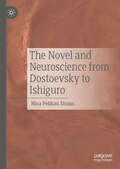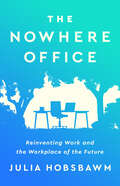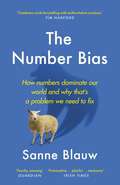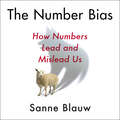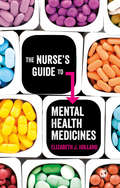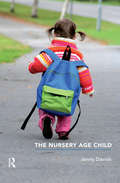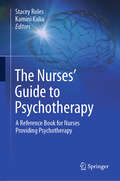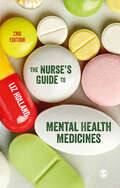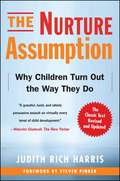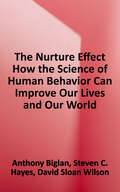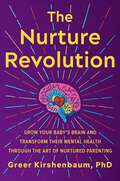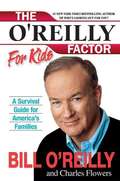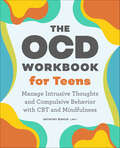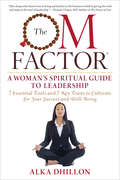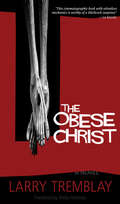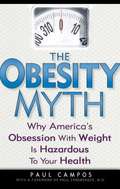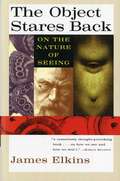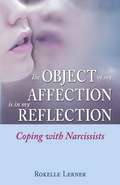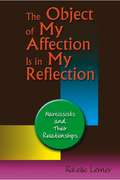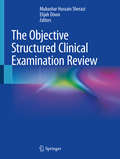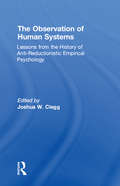- Table View
- List View
The Novel and Neuroscience from Dostoevsky to Ishiguro
by Nina Pelikan StrausThe Novel and Neuroscience from Dostoevsky to Ishiguro explores how affective neuroscience illuminates the emotional and ethical impact of eight novels written between 1864 and 2018, indicating how Freud’s provisional ideas in psychology are now being placed on an organic foundation. An emerging new language describes the brain and body’s primary-process powers now influencing the practices of literary theory, verifying the novel’s importance for self and cultural understanding.
The Nowhere Office: Reinventing Work and the Workplace of the Future
by Julia HobsbawmNamed one of the Financial Times' BEST BUSINESS BOOKS OF 2022 What has changed in the workplace? Everything. The traditional office was probably doomed anyway. Then a global shutdown changed everything we thought we knew about work, including where and when it needed to take place. Automation and the Fourth Industrial Revolution have accelerated, and perhaps as much as one third of the world&’s permanent workforce will soon become remote. In The Nowhere Office, Julia Hobsbawm offers a strategic and practical guide to navigating this pivotal moment in the history of work and provides lessons for how both employees and employers can adapt. Hobsbawm draws on her extensive networks in business, academia, and entrepreneurship across generations to offer new ideas about how to handle hybrid working, as well as provides deep insight into how the way we work is being transformed by larger issues such as community, hierarchy, bias, identity, and security. The Nowhere Office describes a unique moment in the history of work which, if understood and handled correctly, can provide a springboard for the biggest transformational change in the workplace for a century: something better, more meaningful, and more workable for everyone.
The Number Bias: How numbers dominate our world and why that's a problem we need to fix
by Sanne Blauw'The Number Bias combines vivid storytelling with authoritative analysis to deliver a warning about the way numbers can lead us astray - if we let them.' TIM HARFORDEven if you don't consider yourself a numbers person, you are a numbers person. The time has come to put numbers in their place. Not high up on a pedestal, or out on the curb, but right where they belong: beside words.It is not an overstatement to say that numbers dictate the way we live our lives. They tell us how we're doing at school, how much we weigh, who might win an election and whether the economy is booming. But numbers aren't as objective as they may seem; behind every number is a story. Yet politicians, businesses and the media often forget this - or use it for their own gain. Sanne Blauw travels the world to unpick our relationship with numbers and demystify our misguided allegiance, from Florence Nightingale using statistics to petition for better conditions during the Crimean War to the manipulation of numbers by the American tobacco industry and the ambiguous figures peddled during the EU referendum. Taking us from the everyday numbers that govern our health and wellbeing to the statistics used to wield enormous power and influence, The Number Bias counsels us to think more wisely.'A beautifully accessible exploration of how numbers shape our lives, and the importance of accurately interpreting the statistics we are fed.' ANGELA SAINI, author of Superior
The Number Bias: How numbers dominate our world and why that's a problem we need to fix
by Sanne Blauw'The Number Bias combines vivid storytelling with authoritative analysis to deliver a warning about the way numbers can lead us astray - if we let them.' TIM HARFORDEven if you don't consider yourself a numbers person, you are a numbers person. The time has come to put numbers in their place. Not high up on a pedestal, or out on the curb, but right where they belong: beside words.It is not an overstatement to say that numbers dictate the way we live our lives. They tell us how we're doing at school, how much we weigh, who might win an election and whether the economy is booming. But numbers aren't as objective as they may seem; behind every number is a story. Yet politicians, businesses and the media often forget this - or use it for their own gain. Sanne Blauw travels the world to unpick our relationship with numbers and demystify our misguided allegiance, from Florence Nightingale using statistics to petition for better conditions during the Crimean War to the manipulation of numbers by the American tobacco industry and the ambiguous figures peddled during the EU referendum. Taking us from the everyday numbers that govern our health and wellbeing to the statistics used to wield enormous power and influence, The Number Bias counsels us to think more wisely.'A beautifully accessible exploration of how numbers shape our lives, and the importance of accurately interpreting the statistics we are fed.' ANGELA SAINI, author of Superior
The Number Bias: How numbers dominate our world and why that's a problem we need to fix
by Sanne Blauw'A beautifully accessible exploration of how numbers shape our lives, and the importance of accurately interpreting the statistics we are fed.' - Angela Saini, author of SuperiorEven if you don't consider yourself a numbers person, you are a numbers person. The time has come to put numbers in their place. Not high up on a pedestal, or out on the curb, but right where they belong: beside words.It is not an overstatement to say that numbers dictate the way we live our lives. They tell us how we're doing at school, how much we weigh, who might win an election and whether the economy is booming. But numbers aren't as objective as they may seem; behind every number is a story. Yet politicians, businesses and the media often forget this - or use it for their own gain. Sanne Blauw travels the world to unpick our relationship with numbers and demystify our misguided allegiance, from Florence Nightingale using statistics to petition for better conditions during the Crimean War to the manipulation of numbers by the American tobacco industry and the ambiguous figures peddled during the EU referendum. Taking us from the everyday numbers that govern our health and wellbeing to the statistics used to wield enormous power and influence, The Number Bias counsels us to think more wisely.(P) 2020 Hodder & Stoughton Ltd
The Nurse's Guide to Mental Health Medicines
by Elizabeth Jane HollandHave you ever wished there was a simple guide to mental health medicines that can give you the key facts quickly? If the answer to that question is yes then look no further. Each chapter provides a short and easy-to-read overview of the different drug types used in mental health nursing. It focusses only on the need to know information and the associated risks and side effects. The chapters also provide a short medicines list that gives you fast facts relating to the most common drugs used in practice. An invaluable, pocket sized guide to a complex subject. Key features: Simple layout with clear tables putting the facts at your fingertips Written by nurses for nurses providing the perfect amount of detail for the busy student or practitioner Clear and simple language combined with real world case studies to cut through the jargon and terminology
The Nurse's Guide to Mental Health Medicines
by Elizabeth Jane HollandHave you ever wished there was a simple guide to mental health medicines that can give you the key facts quickly? If the answer to that question is yes then look no further. Each chapter provides a short and easy-to-read overview of the different drug types used in mental health nursing. It focusses only on the need to know information and the associated risks and side effects. The chapters also provide a short medicines list that gives you fast facts relating to the most common drugs used in practice. An invaluable, pocket sized guide to a complex subject. Key features: Simple layout with clear tables putting the facts at your fingertips Written by nurses for nurses providing the perfect amount of detail for the busy student or practitioner Clear and simple language combined with real world case studies to cut through the jargon and terminology
The Nursery Age Child (The Karnac Developmental Psychology Series)
by Jenny DavidsThis book aims to facilitate the understandings of nursery age children, that is, children around three, four and five years, and their parents. Children of these ages are particularly fascinating. The wealth of their growing minds is apparent in their play and in their widening capacity to express themselves in words. It is a time of much discovery and experimentation, accompanied often by excitement and anxiety. There is something open-minded and open-hearted about children of these years. The author's views on nursery age children have been based on observing and working with them over the past twenty years, in various settings, including their homes, nursery schools and hospitals, and as a psychologist and child psychotherapist, in assessments and individual psychotherapy. She has also learnt much in working with families and with groups of parents .The book is influenced and informed by the writings of Sigmund Freud, Donald and Clare Winnicott, Anna Freud, Selma Fraiberg, and Jean Piaget.
The Nurses’ Guide to Psychotherapy: A Reference Book for Nurses Providing Psychotherapy
by Stacey Roles Kamini KaliaThis book is a guide for nurses who plan to incorporate psychotherapy into their field of work. Mental illness continues to be on the rise with increases in anxiety disorders, suicidality, and depression among others. Psychotherapy is a well researched intervention that helps individuals to improve and maintain their mental health and well-being. Recently in Ontario, Canada the proclamation of the controlled act of psychotherapy enabled certain members of six professional colleges, including Registered Nurses, to initiate and implement this controlled act. Registered Nurses exist in every nook and cranny across the world, from urban to rural and remote regions and can provide a far reach and excellent care, bridging the gaps for those needing access to psychotherapy services. Nurses have the skill, ability, legislative and regulatory rights to initiate the controlled act of psychotherapy. Nurses can provide psychotherapy treatment and interventions to address the growing needs of the population who experience mental distress. This book is unique in that the target audience is not only the experienced or expert nurse but was also created for nurses looking to shift the primary focus of their career to psychotherapy, for undergraduate student nurses, and for newly graduated nurses pursuing psychotherapy as part of their field of work. This book will build upon the experiences of the nurse client relationship that has always been foundational to nursing and will discuss nurses clinical expertise and knowledge in relation to a holistic approach to care when implementing psychotherapy interventions.
The Nurse′s Guide to Mental Health Medicines
by Elizabeth Jane HollandA book written by nurses for nurses providing a simple guide to the most common medicines. Spanning 8 concise and highly readable chapters, the book explains the pharmacology of different drug types in simple terms while also considering the practical aspects of working with people requiring mental health medicines. Key features: A detailed ′Medicines List′ contained in each chapter providing the key information on dosages, brand names and possible adverse reactions Takes a life course approach highlighting specific considerations for children, pregnancy and older people Cuts through the complex terminology with clear and simple language supported by real world case studies
The Nurse′s Guide to Mental Health Medicines
by Elizabeth Jane HollandA book written by nurses for nurses providing a simple guide to the most common medicines. Spanning 8 concise and highly readable chapters, the book explains the pharmacology of different drug types in simple terms while also considering the practical aspects of working with people requiring mental health medicines. Key features: A detailed ′Medicines List′ contained in each chapter providing the key information on dosages, brand names and possible adverse reactions Takes a life course approach highlighting specific considerations for children, pregnancy and older people Cuts through the complex terminology with clear and simple language supported by real world case studies
The Nurture Assumption: Why Children Turn Out the Way They Do
by Judith Rich HarrisA NEW YORK TIMES NOTABLE BOOKHow much credit do parents deserve when their children turn out welt? How much blame when they turn out badly? Judith Rich Harris has a message that will change parents' lives: The "nurture assumption" -- the belief that what makes children turn out the way they do, aside from their genes, is the way their parents bring them up -- is nothing more than a cultural myth. This electrifying book explodes some of our unquestioned beliefs about children and parents and gives us a radically new view of childhood.Harris looks with a fresh eye at the real lives of real children to show that it is what they experience outside the home, in the company of their peers, that matters most, Parents don't socialize children; children socialize children. With eloquence and humor, Judith Harris explains why parents have little power to determine the sort of people their children will become.The Nurture Assumption is an important and entertaining work that brings together insights from psychology, sociology, anthropology, primatology, and evolutionary biology to offer a startling new view of who we are and how we got that way.
The Nurture Effect: How the Science of Human Behavior Can Improve Our Lives and Our World
by Anthony BiglanA fascinating look at the evolution of behavioral science, the revolutionary way it's changing the way we live, and how nurturing environments can increase people's well-being in virtually every aspect of our society, from early childhood education to corporate practices. If you want to know how you can help create a better world, read this book. What if there were a way to prevent criminal behavior, mental illness, drug abuse, poverty, and violence? Written by behavioral scientist Tony Biglan, and based on his ongoing research at the Oregon Research Institute, The Nurture Effect offers evidence-based interventions that can prevent many of the psychological and behavioral problems that plague our society. For decades, behavioral scientists have investigated the role our environment plays in shaping who we are, and their research shows that we now have the power within our own hands to reduce violence, improve cognitive development in our children, increase levels of education and income, and even prevent future criminal behaviors. By cultivating a positive environment in all aspects of society--from the home to the classroom, and beyond--we can ensure that young people arrive at adulthood with the skills, interests, assets, and habits needed to live healthy, happy, and productive lives. The Nurture Effect details over forty years of research in the behavioral sciences, as well as the author's own research. Biglan illustrates how his findings lay the framework for a model of societal change that has the potential to reverberate through all environments within society.
The Nurture Revolution: Grow Your Baby's Brain and Transform Their Mental Health through the Art of Nurtured Parenting
by Greer Kirshenbaum, PhDThe latest research in neuroscience and parenting come together in this groundbreaking book, which brings to light new realizations about the power of nurture for our children's mental and physical health outcomes. Greer Kirshenbaum, PhD. is a neuroscientist, doula, and parent. Her work began with the goal of developing new treatments for poor mental health; she dreamed of creating a new medication to address conditions like anxiety, depression, addiction, and chronic stress. Over time, she realized that science had already uncovered a powerful medicine for alleviating mental health struggles, but the answer wasn&’t a pill. It was a preventative approach: when babies' receive nurturing care in the first three years of life, it builds strong, resilient brains -- brains that are less susceptible to poor mental health. How can parents best set their children up for success? In this revelatory book, Dr. Kirshenbaum makes plain that nurture is a preventative medicine against mental health issues. She challenges the idea that the way to cultivate independence is through letting babies cry it out or sleep alone; instead, the way to raise a confident, securely attached child is to lean in to nurture, to hold your infant as much as you want, support their emotions, engage in back-and-forth conversations, be present and compassionate when your baby is stressed, and share sleep. Research has proven that nurturing experiences transform lives. Nurturing is a gift of resilience and health parents can give the next generation simply by following their instincts to care for their young.
The O'Reilly Factor for Kids: A Survival Guide for America's Families
by Bill O'Reilly Charles FlowersPopular television reporter Bill O'Reilly shares advice and personal stories. Topics include friends, money, sex, divorce, teachers, God, siblings, fake self esteem, bullies, T.V., death, reading, health, sports, and more. Bill O'Reilly is the father of two children and a former teacher. He encourages kids to make smart choices and develop a code of ethics to live by.
The OCD Workbook for Teens: Manage Intrusive Thoughts and Compulsive Behavior with CBT and Mindfulness
by Anthony BishopGive teens the tools to take control of their OCD Living with obsessive-compulsive disorder can feel overwhelming and confusing, especially for teens. It's tough for teens to manage the intrusive thoughts and behaviors that can disrupt their day, but The OCD Workbook for Teens can help. They'll learn about what OCD really is, then find simple exercises and affirmations to help them manage their symptoms and feel more productive and happy every day.Based in mindfulness and CBT—Explore how cognitive behavioral therapy and mindful habits can treat OCD by helping teens differentiate compulsive and non-compulsive behaviors.Stories and case studies—Teens will find reassurance as they read about other teens with OCD and how they regained control of their lives with help from these strategies and exercises.Designed for teens—This book shows teens how to handle OCD in the face of modern-day teen stressors like school, social media, and thoughts of the future.Help teens with OCD understand themselves, find their confidence, and thrive.
The OM Factor: A Woman's Spiritual Guide to Leadership
by Alka DhillonHow can women flourish when they’re constantly being caught in a never-ending battle of conflicting interests? Work, success, family, ambition—today’s women have never been given the tools to integrate the disparate aspects of their lives into a harmonious whole. Alka Dhillon’s The OM Factor®: The Woman’s Spiritual Guide to Leadership teaches the tools for achieving balance, success, and sanity amidst today’s chaos. <P><P>The OM Factor® is your key to both immediate and long-term fixes for the stress and imbalance dominating your life. Dhillon’s holistic approach to well-being incorporates meditation, yoga, and food for reflection. Each of the 7 tools is designed to cultivate the desired trait or outcome needed for spiritual evolution. Easily applicable “plug-and-play” tools are designed to deliver instant results in emotionally challenging situations. OM Factor prescriptions address when you feel overwhelmed, inadequate, anxious, indecisive, resentment, taken advantage of, or disrespected. As you delve further, an infinitely adaptable toolbox will become available to you.
The Obese Christ
by Sheila Fischman Larry TremblayThe asocial, sexually repressed Edgar, kneeling in grief at his mother's graveside, turns abruptly to witness a terrifying and life-altering event: the brutal rape of a young woman. Compelled by muddled instinct (and ingrained religious conviction), our hero bears the unconscious victim home, solemnly pledging to care for her - and to act as her saviour. As winter closes in, the captor's neuroses are revealed and his behaviour becomes increasingly violent, allowing the victim only one escape.With The Obese Christ, Larry Tremblay squarely situates himself within the realm of Hitchcock, Polanski, and Stephen King. A brilliant exercise in unease and paranoia, The Obese Christ demonstrates Tremblay's powerful ability to evoke dead and fear, while immersing the reader in a wrapped and putrid world told from Edgar's sanctified point of view.
The Obesity Myth: Why America's Obsession with Weight is Hazardous to Your Health
by Paul CamposThe Obesity Myth should be required reading for every health professional in America. I believe any open-minded person who reads this book will conclude that we have been duped by a pack of self-serving lies.
The Object Stares Back: On The Nature Of Seeing
by James ElkinsAt first it appears that nothing could be easier than seeing. We just focus our eyes and take in whatever is before us. This ability seems detached, efficient and rational - as if the eyes were competent machines telling us everything about the world without distorting it in any way. But those ideas are just illusions, James Elkins argues, and he suggests that seeing is undependable, inconsistent and cauthg up in the threads of the unconscious. Blindness is not the opposite of vision, but its constant companion, and even the foundation of seeing itself. Using drawings, paintings, diagrams and photographs to illustrate his points, Elkins raises intriguing questions and offers astonishing perceptions about the nature of vision.
The Object of My Affection Is in My Reflection: Coping with Narcissists
by Rokelle LernerIn her latest book, relationship expert Rokelle Lerner, tackles the innerworkings of narcissism and offers compassionate and realistic advice for surviving a relationship with those afflicted with this personality disorder. A Narcissist can make life exhilaratingly exciting one minute, and shear hell the next. A narcissist has no qualms about taking another's money, love, admiration, body or soul to satisfy their unquenchable hunger. They are not inherently evil, but unfortunately their wounds compel them to act in ways that are sometimes unconscionable, damaging, and ultimately tragic. Whether a mother-in-law, friend, coworker or boss, sometimes it's impossible to avoid narcissists, so instead of being miserable or taken advantage of, Rokelle Lerner shares her insights on the dynamics behind this personality disorder to give readers the tools to cope with narcissists, including: Learning to see narcissists as they see themselves Creating defense factors to ward them off Maintaining a balanced relationship based on mutual love, not one-sided narcissism
The Object of My Affection is in My Reflection: Coping with Narcissists
by Rokelle LernerNarcissists suffer from a personality disorder that began in the early stages of childhood. They are stuck in an early development stage where there is tremendous self-interest, excessive self-absorption, and extreme entitlement. Their behavior is a consequence of early childhood abandonment and abuse. ''The Object of My Affection Is in My Reflection'' will help you understand the complexities of this disorder and arm you with the coping mechanisms to navigate through this type of relationship.
The Objective Structured Clinical Examination Review
by Elijah Dixon Mubashar Hussain SheraziThis review book comprehensively covers most aspects of the Objective Structured Clinical Examination (OSCE). Each chapter provides a meticulous overview of a topic featured in the OSCE, including general surgery, pediatrics, psychiatry, obstetrics and gynecology, gastroenterology, geriatrics, hematology, and ethics. Common scenarios for each topic are featured in every chapter, accompanied by instructions and tips on how to take a patient's history, diagnose a patient, discuss treatment options, and address patient concerns under each scenario. Possible areas of difficulty, common candidate mistakes made, and important differential diagnosis are outlined in each chapter. The text is also supplemented with check-lists, photographs, and tables for enhanced readability and ease of use. Written by experts in their respective fields, The Objective Structured Clinical Examination Review is a valuable resource for medical students and residents preparing for the OSCE.
The Observation of Human Systems: Lessons from the History of Anti-reductionistic Empirical Psychology
by Joshua W. Clegg"Contemporary mainstream psychology has moved toward methodological specificity bounded by instrumental experimentalism. However, this institutional reduction of sanctioned methods has not been fully embraced by all social scientists, nor even by all experimental psychologists. The social sciences are rife with examples of practicing empirical scientists disaffected with the reductionism and atomism of traditional experimentalism.The empirical theory and practice of four of these disaffected social scientists--Lev Vygotsky, James Baldwin, James Gibson, and Kurt Lewin--is explored in this volume. Each of the scientists considered here argued for a rigorously empirical method while still maintaining a clear anti-reductionist stance. They justified their disaffection with the dominant psychological paradigms of their respective eras in terms of a fidelity to their phenomena of study, a fidelity they believed would be compromised by radical reductionism and ontological atomism.The authors in this collection explore the theory and practice of these eminent researchers and from it find inspiration for contemporary social science. The primary argument running through these analyses is that the social sciences should take seriously the notion of holistic empirical investigation. This means, among other things, re-establishing the indissoluble ties between theory, method and procedure and resisting the manualization of research procedures. It also means developing theories of relations and not simply of elemental properties. Such theories would concern particular units, fields, or systems of relations and not be reduced to, or interpreted in the terms of, other systems. Finally, a holistic social science requires integration of the active agent into theory, method, and procedure, an integration that points toward both participatory and emancipatory methods."
The Observing Self: Mysticism and Psychotherapy
by Arthur J. DeikmanUnderstanding the mystical tradition from the perspective of modern developmental psychology and psychodynamic theory.
